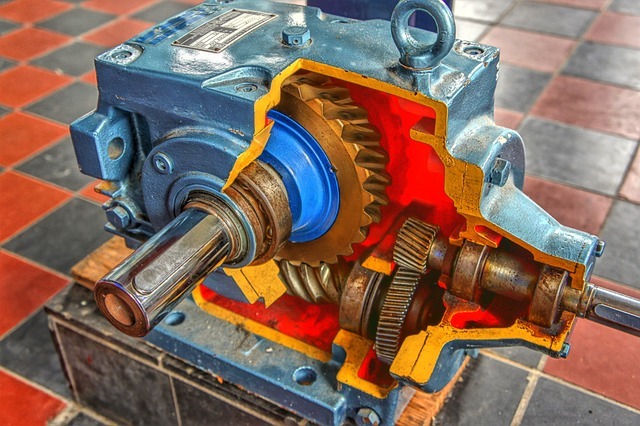When you think of Mercedes-Benz, things that immediately come to mind are cutting-edge technology, innovation, and the use of high-quality mechanics. The introduction of the 9g Tronic seems to continue this tradition. This 9-speed automatic transmission combines performance, comfort, fuel efficiency, reliability, and a smooth driving.
Unlike the previous 7g tronic, the 9g tronic features a torque converter box. However, this isn’t your ordinary torque as it has a hydrodynamic torque converter that is a first in the automobile industry. These features, together guarantee 10% fuel efficiency, something that most car owners are sure to welcome. In this article, we tell you everything you need to know about this latest innovation from Mercedes Benz.
Gearbox
At the heart of the 9g Tronic are dedicated driving modes that highlight the gearbox’s main characters. The gearbox is also relatively reliable, although some people have complained about solenoid issues, rough shifting, slow acceleration, and the tendency of the gearbox to engage limp mode.
Almost all the modern models of Mercedes have the 9G tronic. The 7G tronic was its predecessor, and it can still be found in some of the newer models of AMG with high horsepower.
When was the 9G Tronic Model First Introduced?
The 9g Tronic first came into the market way back in 2013, debuting on the Mercedes E350 Blue TEC. After that, it was made fully available in the W222 S-Class model. Before long, it was the standard for all Mercedes vehicles.
The 9G Tronic is anchored on the 7G Tronic platform, although it provides more impressive solutions to give you a more efficient and smoother driving experience. The way the gearbox was designed was such that it always ensures the engine is in lower rev to give you an improved fuel efficiency of 10% compared to its predecessor, the 7G Tronic.
This model comes either in the MCT unit or a torque converter. The MCT unit is a regular 9G, but with no torque converter. The MCT is made with a wet clutch design with the computer made to support the double-clutch feature.
How does the 9G Tronic and the 7G Tronic Compare?
The 9G Tronic, as we said above, is the sequel to the famous 7G Tronic 7-speed gearbox and it packs lots of improvements on its predecessor. The 9G was introduced by the Mercedes E350 Blue Efficiency model in 2013, and the version contains the most obvious improvements of the 9G Tronic.
And while the 0-60 MPH times remained the same at an impressive 6.6 seconds, the E350 BE boasts improved fuel consumption of 53.3 mpg which is superior to the 51.4 mpg offered by its predecessor. This newer gearbox is also kinder to the environment, emitting 138g of carbon dioxide per 100km. This is an improvement of the 144g per 100km that was done by the 7G Tronic.
Another area in which the 9G Tronic outclasses the 7G tronic is when it comes to fuel consumption. This is even more obvious when driving in the city. The E350 BE saves 44.1 mpg compared to 40.9 mpg given by the 7g tronic. The 9-speed gearbox is also available in the AWD and RWD models, petrol, diesel, and hybrid models.
When it comes to smoother and cohesiveness, the 9g Tronic is the obvious winner, particularly on heavy and large Mercedes models.
Mercedes 9G-Tronic reliability and common issues
It is safe to say that the Mercedes 9g Tronic is a reliable gearbox. However, it is not without some issues that need to be mentioned. Users have reported that sometimes the 9g Tronic gearbox experiences rough shifts, particularly from neutral to gear one and from gear one to gear two. Also, when the car is cold, the gearbox becomes a bit slow to respond.
There have also been reports about problems with a solenoid that puts the vehicle in limp mode to avoid damaging other vital components of the gearbox.
What are the Service schedules for the 9G Tronic?
Being a complex part of precision engineering, the Mercedes 9G Tronic gearbox requires constant maintenance if it is to deliver peak performance. Failing to do the maintenance as scheduled will lead to all types of problems with your gearbox.
With that said, make sure to service the gearbox after an average of 75,000 miles or after 5 years. When you take it for service, things that will be done include replacing the filter and the oil of the automatic gearbox. Sometimes, however, the mechanic or the dealership may suggest doing some other things. If that’s the case, do not resist as it will help avert any problems down the road.
How good is the Mercedes Benz 9G-Tronic transmission?
The 9g Tronic gearbox packs a raft of impressive features like smooth operation and superior fuel efficiency that puts it in the league of the best luxury car gearbox options. While it is one of the fastest gearboxes around because of its lack of a dual-clutch unit, this does not take away anything from its impressiveness. The 9G tronic provides noteworthy upgrades in nearly every category over its predecessor, the 7G tronic. The 7G tronic, however, still beats the 9g Tronic in terms of the maximum torque that it can take. This explains why some larger diesel and newer Mercedes 12-cylinder engines still use the 7g tronic.
Conclusion
The 9G Tronic gearbox is the latest gearbox from Mercedes. Featuring complex types of precision engineering, this gearbox delivers outstanding fuel efficiency and smoother operation. It builds on the platform of its predecessor, the 7G-tronic gearbox, but offers important upgrades on nearly all spheres.
It was first used on the 2013 Mercedes E350 Blue but has since become the gold standard in all models of the vehicles. Apart from fuel efficiency, the 9g tronic also performs better on carbon dioxide emission, producing 138g per 100km compared to 144g per 100km produced by its predecessor.

